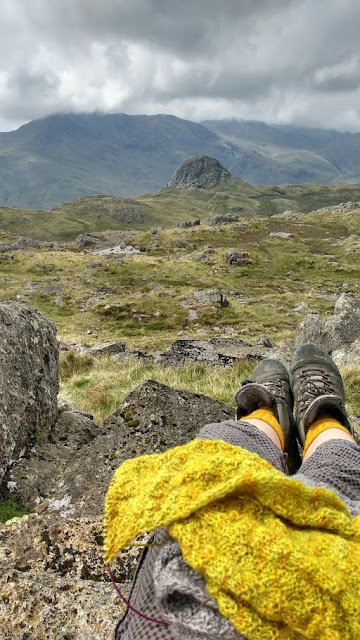Never one to shy away from starting a new project - no matter how big - I am now officially obsessed by English Paper Piecing (EPP), which is a quilting technique that wraps each piece of fabric around a paper template. The pieces are then sewn together with a whip stitch and the paper pieces are removed before the final quilting.
I recently bought two beautiful books:
English Paper Piecing by
Florence Knapp aka
Flossie Teacakes, which is a celebration of the craft, an historical overview and an instruction manual, and
Millefiori Quilts 3 by
Willyne Hammerstein which quite simply contains the most detailed and staggeringly beautiful and intricate quilts I've ever seen. They positively dance with colour and movement.
Now perhaps a Millefori quilt is not theideal choice for one's first attempt at EPP but since most quilts take a heck of a long time, why not go for it? So I've chosen her
Tarantella quilt and will be sewing it mostly from stash (I may need to buy some fabric for the border but if I ever make it that far I'll be happy to go shopping). I chose this design in part for its exuberance and the number of colours; hopefully if each colour works with the one beside it, somehow it will all come together for the bigger picture. I am going to start in the middle and slowly work my way outwards. In case you wondered, there are only 2981 pieces. Plus the border. And then of course the whole thing will need to be quilted. Yes, I am slightly nuts.

I have a few friends who are quilters and they gave me lots of tips for specialist EPP tools which I picked up along with some sashiko supplies at the Festival of Quilts. In particular, I like the travelling needle gadget in the bottom left hand corner made by Clover. I can thread ten needles and stick them in there, to pull out when needed. Life is too short to baste every piece (did I mention there are 2981 pieces - I can't even begin to do the maths to figure out how many sides of each need to be sewn), and so I've bought a handy fabric glue stick and lots of refills.
And I started with my first rosette! Here you can see how the fabric wraps around the paper.
And how it looks from the front:
Twenty pieces down, 2961 to go!
Things I have learned already:
1. Cutting out paper shapes is oddly soothing.
2. I don't like cutting out the fabric (too fiddly and I worry about fraying )
3. I am very glad to have the glue pen, although I'm going to need even more refills. I love wrapping the fabric around the paper.
4. The initial appeal of EPP was its portability. I keep my little wrapped pieces in a see-through pouch along with my needles and thread, and just sew a piece here and there when I have the odd ten minutes. The wrapping creates really smooth edges and if I've cut my templates correctly, in theory, the pieces will all line up nicely. The advantage over regular hand piecing is that you don't need to iron open the seams afterwards (I hate ironing and it's definitely not portable).
5. I will never, ever think of knitting as a slow craft again.
This is obviously a long-term project but one I am very happy not to stress about. I will try to do some quilting every week and will just let this project evolve and grow as and when it does. It's nice to be using different materials and hand movements from the knitting and after years of hiding the fabric stash under the bed, I'm having a great time re-acquainting myself with all those fat quarters I've collected. I have no idea what direction this quilt will go in colour or tone-wise, but I do have several Kaffe Fassett charm packs so chances are good that it'll be a colour explosion.
Stay tuned. . .



















































